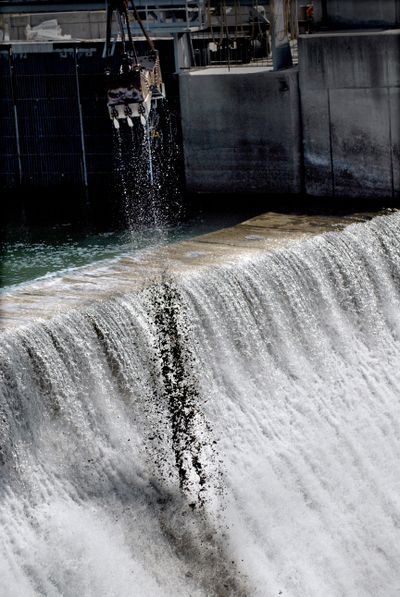Avista starts dredging river behind Monroe dam
Rocks, gravel being redeposited downstream

Avista Corp. is using heavy equipment to scoop rocks and gravel from behind the Monroe Street Dam in downtown Spokane.
Company officials say the work, which began Wednesday, is a routine procedure to keep rocks out of the dam’s intake areas. But the action is drawing fire from Rachael Paschal Osborn, the Sierra Club’s Spokane River coordinator, who says the work may be stirring up PCBs, heavy metals and other toxic materials deposited behind the dam.
“We know that there are toxins in the Spokane River, and I suspect there are toxins in the material they’re moving,” Osborn said. “You can see clouds of (sediment) forming in the water.”
Avista is dumping the material on the dam’s downstream side into redband trout habitat, she said.
Hugh Imhof, Avista spokesman, said the company is following the terms of its state-issued permit. “Washington Department of Fish and Wildlife asked us to put that debris back into the river,” he said.
Dams interrupt the flow of rocks and gravel, causing some parts of the river to become “starved” for spawning-ground-size gravel, said Madonna Luers, spokeswoman for the Washington Department of Fish and Wildlife. Reintroducing rock helps maintain spawning areas, she said.
The permit was also issued for the summer months, when most young trout have emerged from the gravel and are “free-swimming,” Luers said.
As part of the permit’s conditions, Avista must also submit a written report to the Fish and Wildlife department by Oct. 31, detailing the type and amount of material the company moved. A more thorough report is due to the Washington Department of Ecology within two years of a new license being issued for the Monroe Street Dam.
“I don’t think any of us knows what’s in the sediment behind the dam. We acknowledge there is the potential for contamination,” said Jim Bellatty, Ecology’s water quality section manager. “When we find out a little more about the quality of the sediments behind the dam, it might make a difference in how (dredging) will be permitted in the future.”